“You can’t stop the end of the world, it’s already happened.”
This is how producer Elaine Lithgow describes the world of Broken Weave, an upcoming sourcebook for Dungeons & Dragons 5E that brings a new ‘tragic fantasy’ setting to the RPG. The book imagines the high fantasy tropes of D&D and its classic fantasy ilk as having frayed, its gods gone and the magic holding its lands together unravelling with catastrophic effects.
In contrast with the grand exploits of typical fantasy adventures, this isn’t a disaster that can be avoided somehow: the worst case scenario has already come to pass. Players’ characters aren’t heroes setting off on an epic adventure to save the world – they’re survivors of its apocalypse, eking out a living amongst what remains of a once-great world.
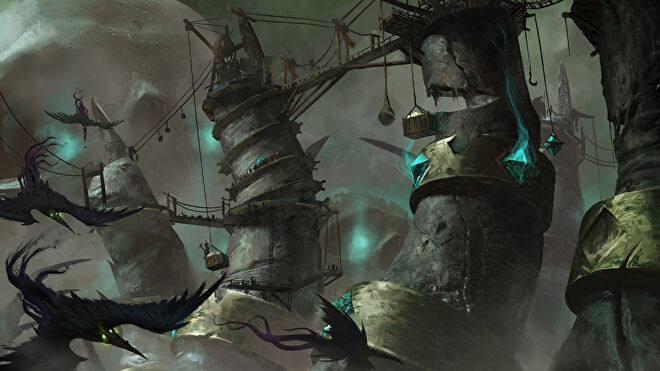
“I always pictured Broken Weave as a post-apocalyptic version of my own 5E campaign,” Lithgow explains.
Lots of fantasy settings have you fighting to prevent the end of the world. But in Broken Weave, it’s already too late.
“Lots of fantasy settings have you fighting to prevent the end of the world, to stop the dark lord and be the big hero. But in Broken Weave, it’s already too late. The world is irrevocably broken on a metaphysical level.”
“It’s a tale of what comes after everything falls apart – how you have to pick yourself up and forge a completely new future,” adds executive producer Dominic McDowall.
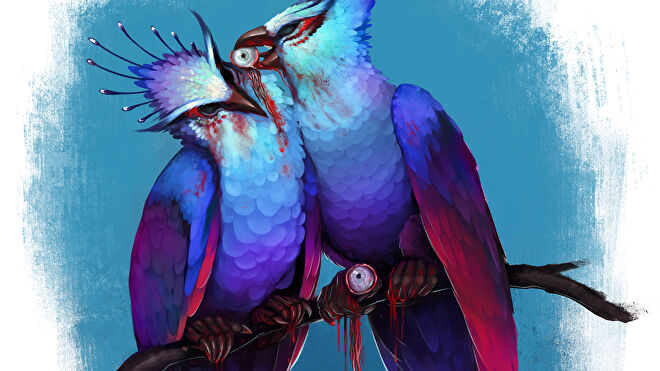
The downbeat tone is somewhat familiar territory for the team at UK studio Cubicle 7, having previously helmed the grimdark worlds of Warhammer: Age of Sigmar and Warhammer 40,000 into RPGs Soulbound, Wrath & Glory and this year’s Imperium Maledictum. (On the lighter side, the studio also created Lord of the Rings RPG The One Ring and the Doctor Who RPG.)
Lithgow acknowledges the crumbling fantasy lands of video games Dark Souls and Elden Ring as “a huge inspiration” on Broken Weave. Also cited is mournful giant-slaying masterpiece Shadow of the Colossus, a personal touchstone for Lithgow, echoed in the titans that wander Broken Weave’s ruins.
“Everywhere you look, you see the broken remnants of a once-beautiful world,” Lithgow says. “The ‘monsters’ are not just horrible beasts out to kill you; they have an air of faded nobility or empathy around them. And the characters in the world scramble for meaning and purpose amid a world that’s all but dead.”
Creative director Emmet Byrne, meanwhile, compares the upcoming RPG‘s fractured world to that of Stephen King’s The Dark Tower series, where “time and distance start to lose meaning, and people desperately cling to the old ways to try to give themselves a sense of purpose”.
It’s pretty clear that the setting was born during the pandemic.
Alongside these fantasy stories, there is a very real collective trauma that permeates Broken Weave’s recovering world: the global COVID-19 pandemic.
“Thematically I think it’s pretty clear that the setting was born during the pandemic,” Lithgow says. “Many of us found ourselves isolated from loved ones, trying desperately to hold on to connections when everything outside our door became uncanny and strange.”
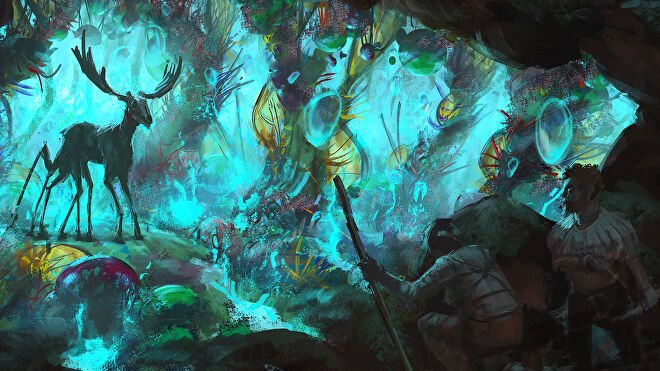
This strangeness takes on a literal form in Broken Weave. Caused by the world’s warped magic are the supernatural and psychedelic effects of a mysterious force known as Decay. Influenced by the new-weird genre of literature exemplified by Jeff VanderMeer’s Annihilation, Decay warps not only physical matter, but time and space, affecting both the land and its inhabitants in unpredictable and disturbing ways.
“We wanted to depict a truly strange and alien world where magic has gone wild,” Lithgow says. “You never know what you’re going to encounter around the corner.”
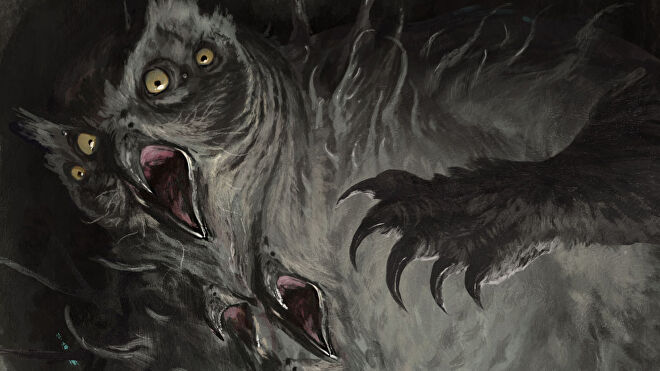
Decay’s entropy can be seen in Broken Weave’s distortions of classic Dungeons & Dragons species and creatures. Elves, dwarves, humans, halflings and more can be mutated by its fearsome influence, becoming burning manifestations of pain, crystalline beings, ravenous undead – or simply brainless goo. The book includes a dedicated system for transforming other creatures from D&D 5E into horrific evolutions fit for Broken Weave’s world, meaning players could run into uncanny versions of everything from dragons to owlbears.
“Players can take their own homebrew game or their favourite fantasy world, and use Broken Weave to run a post-apocalyptic version of that world,” Byrne says. “The GM could even start the game without letting their players know, and they only discover the truth as they play!”
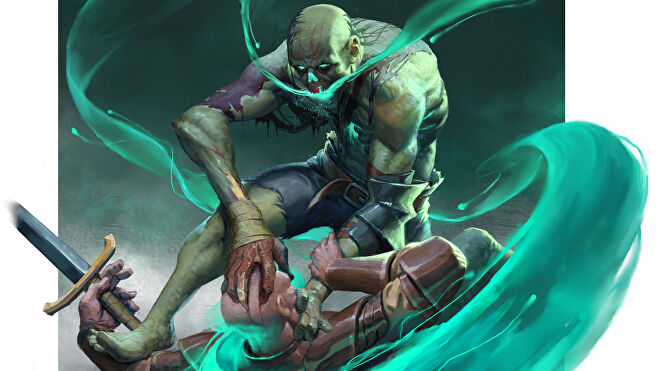
Perhaps more frightening than Decay’s nightmarish effects on physical appearance is its ability to erode memories, forcing adventurers in the world to store their treasured recollections in trinkets known as memoria. Even stored, memories aren’t entirely safe; players’ characters exposed to Decay may find themselves asked by the GM to sacrifice precious memories to retain essential skills and abilities.
“It’s a deeply tragic experience that interweaves gameplay and roleplaying in such a powerful way,” Lithgow says. “As someone who loves using props at the table, I dream of seeing players sitting around a table, each with physical trinkets to represent their character’s memoria in front of them. It’s a prop-maker’s dream!”
While the world of Broken Weave is explicitly birthed from tragedy, with the ramifications still visible in its environments and inhabitants, its creators are keen to make clear that the RPG is ultimately an upbeat expression of hope and collective recovery in the face of shared trauma.
One of the key aspects of the setting is this idea of hope and community.
“Some games and settings are irredeemably grotesque and overwhelmingly bleak,” Byrne says. “While Broken Weave has some of these elements, one of the key aspects of the setting is this idea of hope and community. People come together to create something new, and to make a place for themselves in the world.”
“It can’t always be grim and tragic, or the entire tone loses meaning,” adds Lithgow. “Finding hope and even humour in the setting is a big part of that. Luckily, people are great at that anyway. Just look at your average Dark Souls community and you’ll find a whole wealth of people who have found fun and laughter even in explicitly dark and dour settings.”

Central to players’ sense of recovery and community is the introduction of dedicated rules for building a settlement in Broken Weave’s world. The party’s Haven is created by the group before their characters – with the option to detail everything from its founders’ governing philosophies and nearby landmarks to local food, fashion and culture – giving them something shared to fight for and protect during their adventures.
It becomes a very personal story.
“One of the strongest aspects of Broken Weave is the emphasis it puts on building a home and relationships,” Byrne says. “It becomes a very personal story.”
As well as being somewhere to return to between quests, characters can undertake projects – enabled via a dedicated set of Downtime mechanics – that may take months or years to complete, such as constructing a new building or translating a language. A separate system allows campaigns to span multiple generations across decades or centuries, letting players see how their community evolves over time before jumping back in with new adventurers descended from their earlier characters.
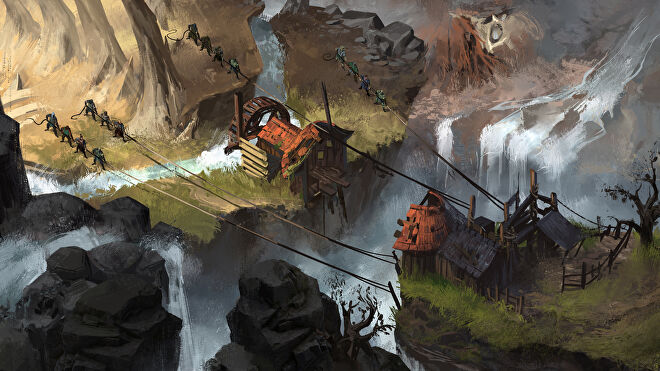
These characters are created using Broken Weave’s original Lifepath system. Replacing the species and background combination of typical D&D 5E characters, Broken Weave characters are generated from a series of events, experiences and memories that define their abilities and skills alongside providing narrative leaping points for players. For example, a character who survived a childhood illness may have a hardier Constitution stat, while a former blacksmith apprentice may be proficient with smithing tools.
“[The Lifepath system] generates a huge amount of backstory and really grounds your character in the world,” insists Byrne.
Forming community, establishing relationships with other inhabitants of the world and gradually emerging from the rubble of the land all contribute to Decay’s antithesis: Hope. Lithgow calls the struggle between Decay and Hope “the central conflict of Broken Weave”. Like Decay, Hope is realised in-game as a concrete element, enabling players to push for success during trying tests and even cheat death by strengthening their resolve to fight for others.
While Broken Weave bills itself as ‘tragic fantasy’, it is this hope that it believes will win out over the destructive power of decay and loss. Like its players, the game has emerged from some of the darkest years in living memory. As groups gather around the table to play, its message is that strength lies in being together and holding on to hope, no matter how dark the times – past, present or future – may seem.
“[The COVID-19 pandemic] gave us a very strong core message to build upon,” says Lithgow. “That when the future seems hostile and uncertain, there is real power in coming together, building a community and protecting that fragile flame of hope.”
Read more at this site
